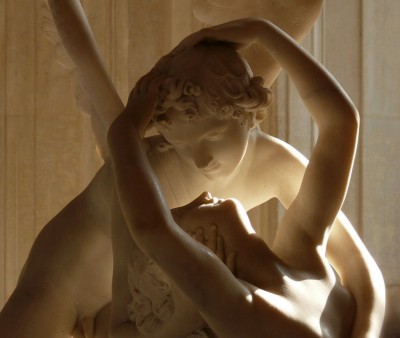
In the Michelangelo Gallery at the Louvre, the visitors crowd around this idyllic image of a loving couple: a winged man and a swooning woman in a voluptuous embrace, their lips about to join in a kiss. Who are these beings whom eighteenth-century sculptor Canova chose to immortalize in marble?
Watch this multimedia feature of the Louvre, to take a closer look at this masterful composition as you listen to the story of Psyche and admire Canova’s virtuoso treatment of the marble.
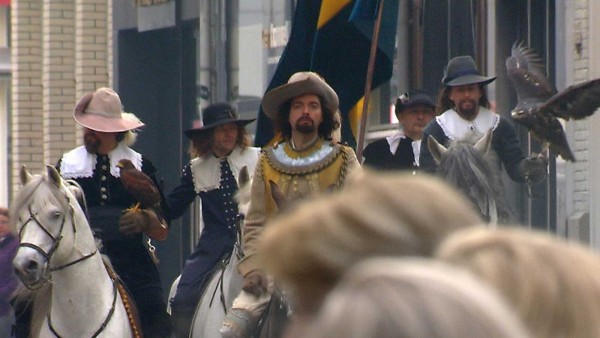
Rembrandt’s masterpiece the “Night Watch” returned to the Rijksmuseum, the home of the world’s largest collection of Rembrandt paintings, after a decade-long renovation process.
To mark the reopening the museum surprised visitors at a shopping centre in Breda with a flashmob recreating Rembrandt’s painting, titled “Onze helden zijn terug“, “Our heroes are back!”
The painting, completed in 1642, at the peak of the Dutch Golden Age, depicts the eponymous company moving out, led by Captain Frans Banning Cocq (dressed in black, with a red sash) and his lieutenant, Willem van Ruytenburch.
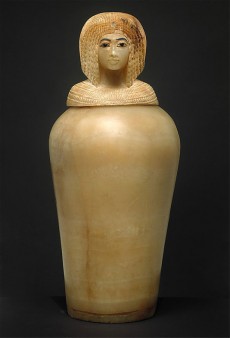
“This canopic jar was discovered in 1907 in this very mysterious little uniscribed tomb in the Valley of the Kings along with three others; because canopic jars com in sets of four (…) She’s just incredibly beautiful. She’s made out of this translucent stone and has this veining, this wonderful creamy, whitish-yellowish color. And then you get the beautiful shape with the high shoulder (… ) This beautiful canopic jar was meant to accompany a burial–and never to be seen again.”
Do not miss watching this fascinating episode of the web series “82nd&Fifth” by the Metropolitan Museum of Art, describing a beautiful canopic jar from the Valley of the Kings, its features and its mystery…
Description: Canopic jar with a lid in the Shape of a Royal Woman’s Head, ca. 1352-1336 BC. Travertine,blue glass, obsidian, unidentified stone. Reign of Akhenaten, Dynasty 18, New Kingdom, Amarna Period. Egypt, Upper Egypt; Thebes, Valley of the Kings, Tomb KV 55, Davis/Ayrton 1907.
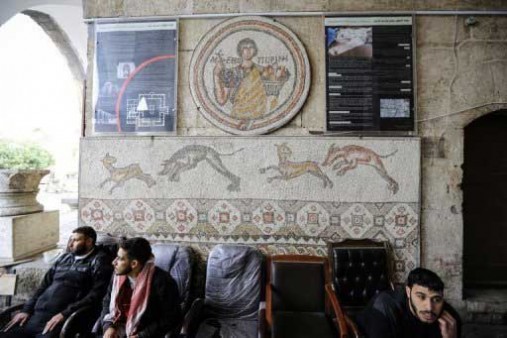
The mosaics reported to have been recently stolen from Syria may have been stolen last year, namely in March 2012, as they are already included in the INTERPOL database. Here some interesting information.
INTERPOL called “for vigilance on looting of ancient mosaics in Syria” on May 21st 2012. As David Meadows (rogueclassicis.com) points out none of the reports published last week about the stolen mosaics mention where or when these artefacts have been looted. He also refers to a Time magazine article, published last September, where it was suggested that antiquities were being sold to fund the rebels (“Syria’s Looted Past: How Ancient Artifacts Are Being Traded for Guns”). As Meadows writes: “That said, however, the clearly deliberate vagaries of the most recent announcement suggest that Syria’s ‘official’ channels are clearly playing up the looting aspect to gain political points in the Western media and as such, cause me to genuinely wonder who is doing the looting, the extent of it, and for what purposes. Indeed, in yesterday’s post we mentioned that many of the articles about this ‘Odyssey’ incident were accompanied by a photo of rebels sitting under a Roman mosaic”.
What is being implied?, Mr. Meadows wonders…
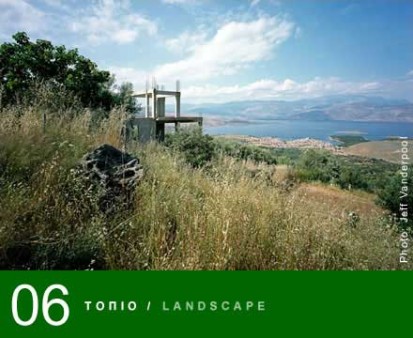
The new issue of MONUMENTA is online. It is dedicated to “Landscape” and features interesting articles written byKonstantinos Moraitis (Architect,Associate Professor School of Architecture NTUA), Giorgos Vavouranakis (Lecturer in “Prehistoric Aegean: Theoretical Archaeology”, National & Kapodistrian University of Athens), Christos Karagiannidis (anthropologist- museologist), Stelios Lekakis (archaeologist) etc.
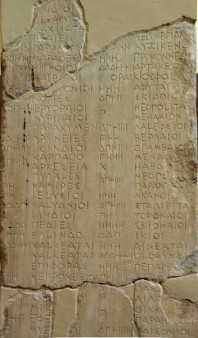
Attic Inscriptions Online (AIO) is a website designed to make available the inscriptions of ancient Athens and Attica in English translation.
It is being launched with translations of the 281 inscribed laws and decrees of Athens, 352/1-322/1 BC, which have recently been edited by Stephen Lambert as IG II3 1, 292-572.
So far there are only a handful inscriptions, in English translation only, without the original texts, but as mentioned on the site, the functionality of the site will be enhanced (e.g. by refining the search function), and eventually the site is to be extended to include all the inscriptions of Attica (ca. 20,000 in total).
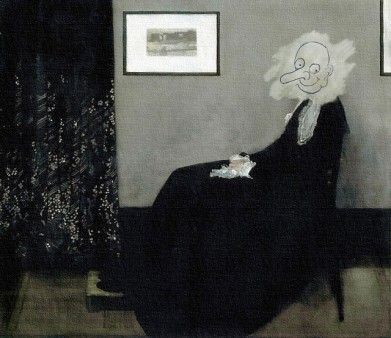
We read this article about amateur conservation methods, written by Emily Sharpe, in The Art Newspaper:
“News of a grandmother’s botched restoration of a 19th-century fresco in a small church in Borja, Spain, spread through the art world like wildfire this summer. Bloggers took to their computers asking how this could have happened and what the chances are of it happening again elsewhere. Although the likelihood of a well-meaning member of the public walking into a prominent museum like London’s National Gallery, paintbrush in hand, ready to set to work on a Titian, is slim, what about works in small private collections that remain largely out of the public eye but may one day end up in a museum or national archive? Unfortunately, these pieces are all too often subjected to misguided interventions.
“Amateur restorations have always been a problem,” says Joyce Hill Stoner, a paintings conservator and professor at the Winterthur/University of Delaware Program in Art Conservation, who has lectured on the danger of do-it-yourself restorations for more than 30 years. Before the incident in Spain, Stoner had assumed that the phenomenon was more American than European. “In the US, you buy a Reader’s Digest so you can fix your plumbing or your gutters, so why not also try to fix your paintings?” According to Stoner, a newspaper column that was popular in the 1960s and 70s advised readers on how to bleach their prints. “It was as if our profession was something that could be learned in 20 minutes,” she says.
Winterthur offers a free, monthly conservation clinic where the public can bring in works of art and get expert advice. Some of the things Stoner has seen are shocking, from a collector trying to age a frame by leaving it on the roof of his car in a rainstorm to using household cleaning products on paintings. “A geology professor tried to remove a layer of grime from a beautiful 19th-century landscape with Ajax. He scrubbed away a tree in the process,” Stoner says. “People say that they’re trying to treat their paintings and I tell them that’s like telling a doctor that they’re in the middle of taking out their own appendix,” she says.
Several years ago, Stoner met a couple who let a friend, an artist, “feed” their paintings, including a Velázquez, while they were on holiday. This involved coating the painting with linseed oil—an ill-advised practice as the oil will darken and crack over time and is difficult to remove without taking off the original paint. “People do not understand the difference between an artist’s training and that of a conservator. Becoming a mother is different from becoming a paediatrician. Artists are the parents, we are the paediatricians,” she says.
Stoner thinks the decision to do-it-yourself is often motivated by money, as collectors often “blanch” when she estimates the cost. “It’s better not to touch the work than to do something unwise,” she warns.
It’s not only paintings that get the do-it-yourself treatment. Mark Browne, a conservator at the British Library, often comes across photographs stuck with self-adhesive tape, which can leach into the paper. He also has to deal with over-zealous stamp collectors who bleach envelopes—a practice that darkens and weakens the paper’s structure.
Browne feels that most collectors mean well, and that the real issue is access to cheap materials. “People had the best intentions when they put their photographs in those magnetic albums that were popular in the 1980s and 90s. They didn’t realise that the plastic would degrade the photos,” he says.
One positive outcome of the incident in Spain is heightened awareness. “In some ways, we were heartbroken, but on the other hand, it has resulted in a tremendous boost in advocacy for our profession,” Stoner says.”
Photo from the film “Bean: The Ultimate Disaster Movie”, presenting Bean’s attempt to patch up the lacquer thinner accident, which disssolved the face of “Whistler’s Mother” from the painting.
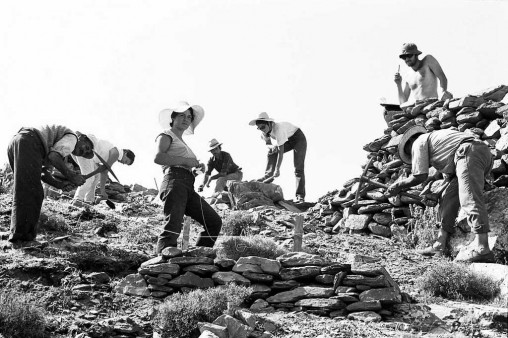
Between 1967 and 1977 an Australian team excavated at the site of Zagora on the Cycladic island of Andros under a permit issued to the Archaeological Society at Athens. During that time a number of Zagora Heritage Films were made on 16mm stock. Two and half minutes of footage has been edited together to give you an idea of what it was like to be at Zagora in the sixties.
You can view the video on the Institute’s Youtube channel by clicking on this link
http://www.youtube.com/watch?v=wxh-jYdYCGY&feature=youtu.be
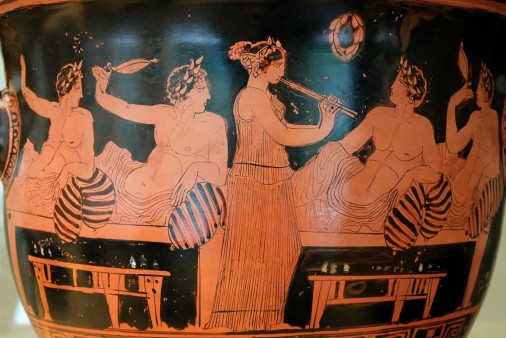
The Sydney Friends of the Australian Archaeological Institue at Athens & The Friends of the Nicholson Museum organize a special event. On October 15 the Sydney Friends of the Institute will be hosting with the Nicholson Museum an exclusive ancient Greek food night at the Museum. “Hatted” Chef David Tsirekas will take guests on a culinary journey through the ancient world with five tasting plates matched with unique Greek wines.
Speakers on the night will include Dr Ted Robinson, who will talk about the influence of Greek food in the ancient world and Michael Turner, who will speak about the god Dionysos. Lastly, Angie Giannakodakis will talk about “The Rise and Rise of Greek Wines Today”. Members will remember Angie as the sommelier of George Calombaris’ restaurant “The Press Club” in Melbourne. Angie is taking time out from her new restaurant “Epocha” in Carlton Gardens in Melbourne to speak to us in Sydney!
$100 per person
For bookings call 9351 4759 or email [email protected]
For more information: http://aaiasydney.tumblr.com/post/30963423806/amazing-food-and-wine-event-at-the-nicholson
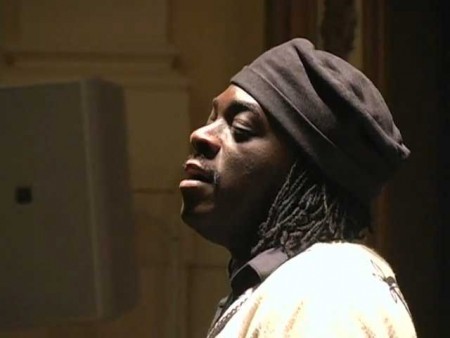
At The University of Chicago Magazine we read: “For Mark Eleveld and Ron Maruszak, the realization was inescapable: Homer, the blind bard, ancient Greece’s greatest poet, whose epics on the Trojan War and its aftermath founded the Western canon and influenced 3,000 years of literature, was, basically, a slam poet. What else to call a man—a showman and writer—who made his living turning poetry into entertainment, who traveled from town to town performing memorized verses before crowds of listeners? “I imagine that if Homer was alive today, and he had to go hang with a crew, he’s either going to the playwrights or to the performance poets,” says Eleveld. “In my head, it’s the performance poets. They take a hit in academic circles, but they’re closer to Homer than people realize.”
That’s the argument running through a documentary by Eleveld and Maruszak, Poets and Profs: Looking at the “Iliad,” in which ivory tower luminaries like Robert Pinsky and Nicholas Rudall, Herman Sinaiko, AB’47, PhD’61 (who died in October 2011), and James Redfield, U-High’50, AB’54, PhD’61, share the screen with leading lights from the slam poetry world: Taylor Mali, Bob Holman, Regie Gibson, Marc Smith. West Point English professor Elizabeth Samet provides some of the film’s most stirring moments, discussing the Iliad’s lessons—literary, military, and moral—for future soldiers.”
A trailer for the film:
http://www.youtube.com/watch?v=C_p9_rs-Cl4
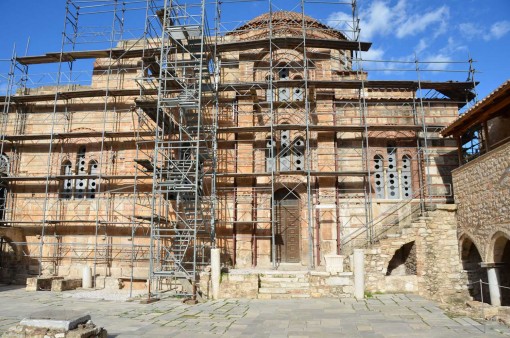
On Sunday, October 21, 2012, at 11:30 am, MONUMENTA, George Amyras and OIKO.POLI.S. Haidari – Friends of Nature, run for monuments promoting safe and sustainable urban mobility, co-organizing the 5th Cultural Bicycle Ride tracing the Sacred Way (Hierá Hodós).
Meeting point will be Kerameikos Square, at the conjunction of Ermou and Pireos streets, opposite “Gazi”. Route will follow Hierá Hodós up to the Daphni Monastery, where participants will have the chance to visit one of the most important Byzantine monuments of Greece.
For more information: http://monumenta.org/
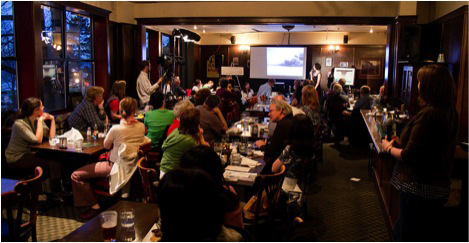
What are science cafés? Well, they are “live events that take place in casual settings, such as pubs and coffeehouses, are open to everyone, and feature an engaging conversation with a scientist about a particular topic”. They exist all over the world, varying from place to place. It is like a movement. Anyone can start a science café. Which means that one doesn’t have to be a scientist to organize one. It doesn’t take great effort or a big budget. Quite the contrary, as a science café is meant to have an intimate café atmosphere, which distinguishes it from large scale events and crowded lecture halls. For more information, visit the site http://www.sciencecafes.org/.